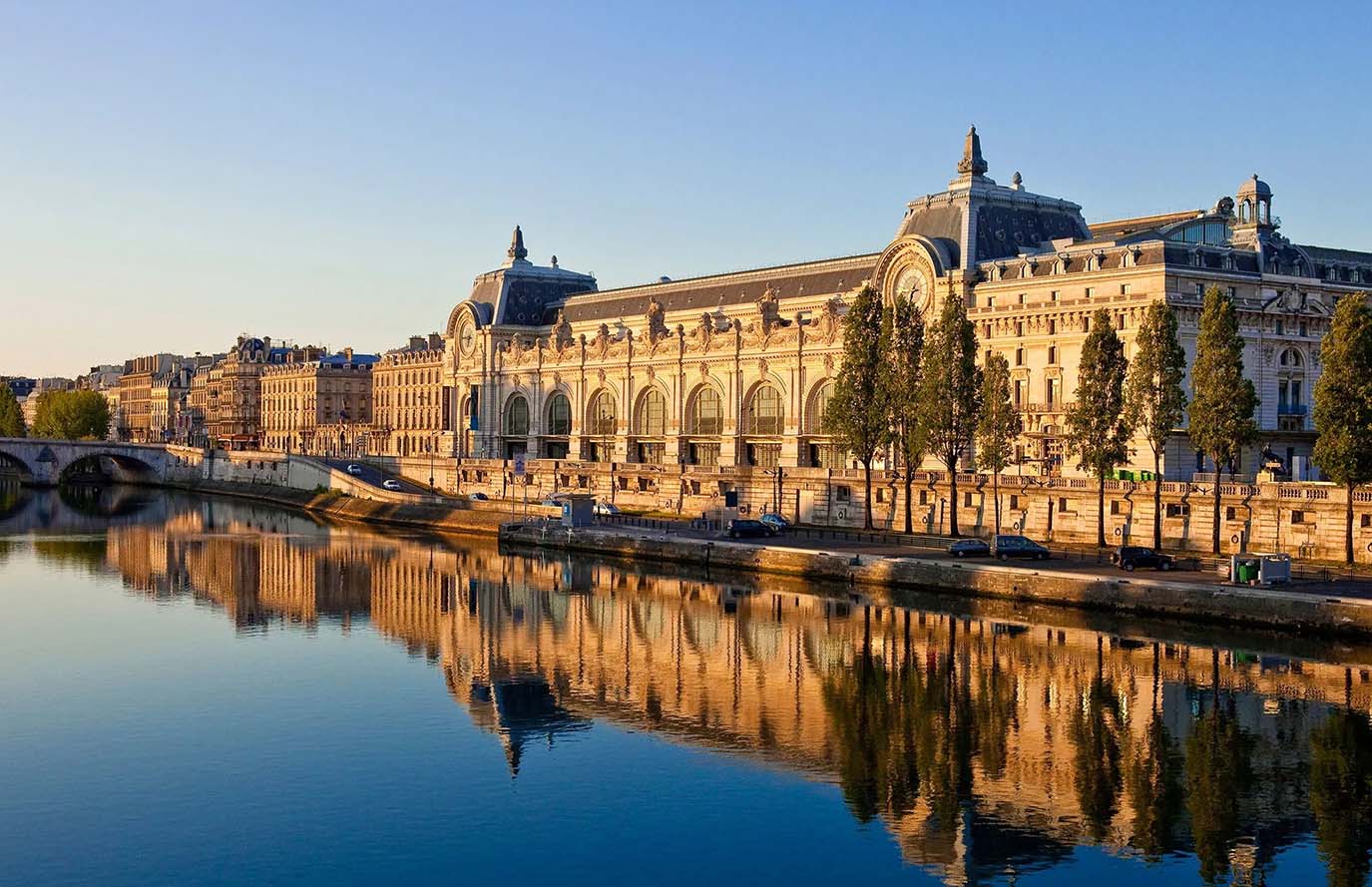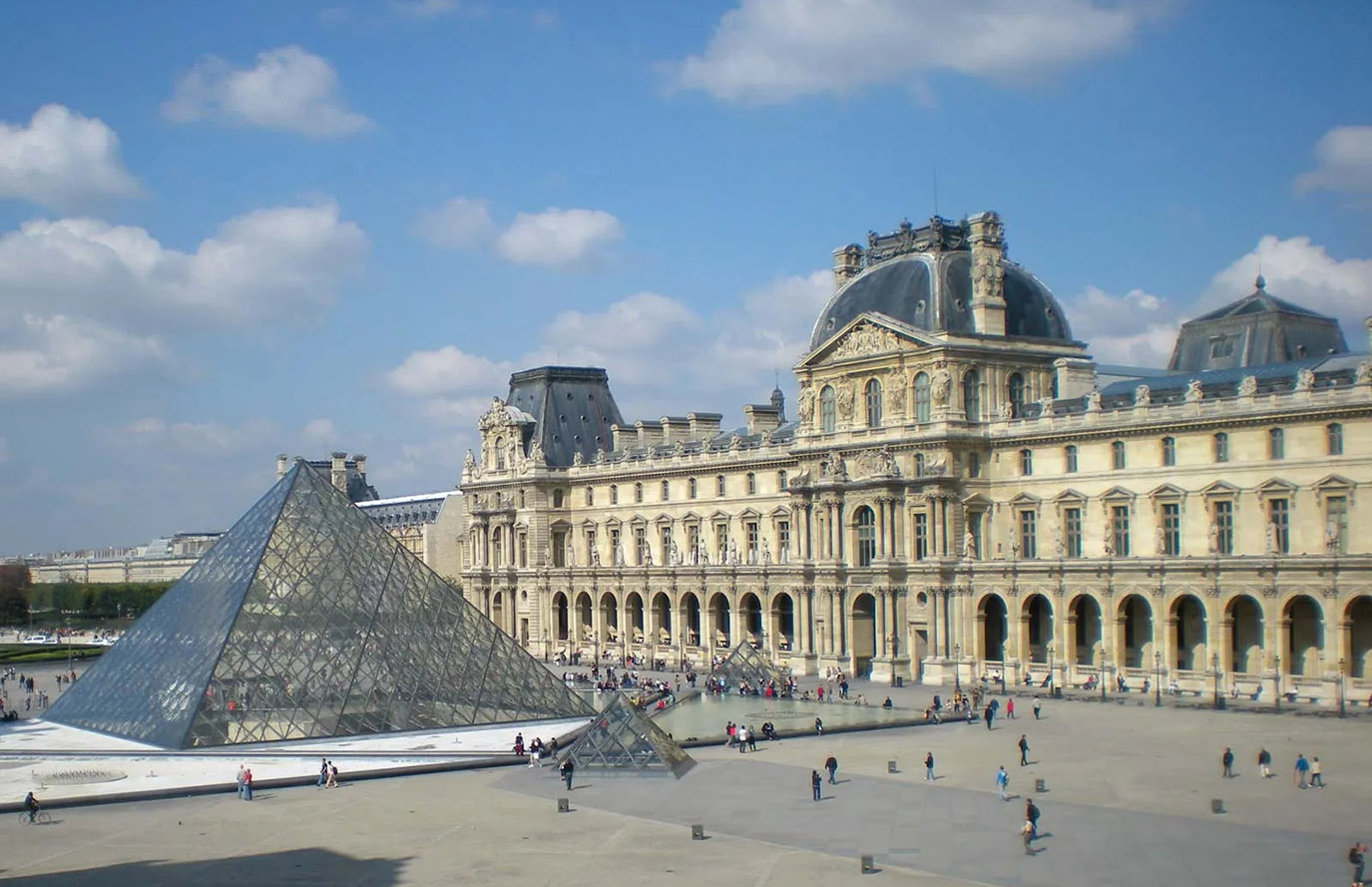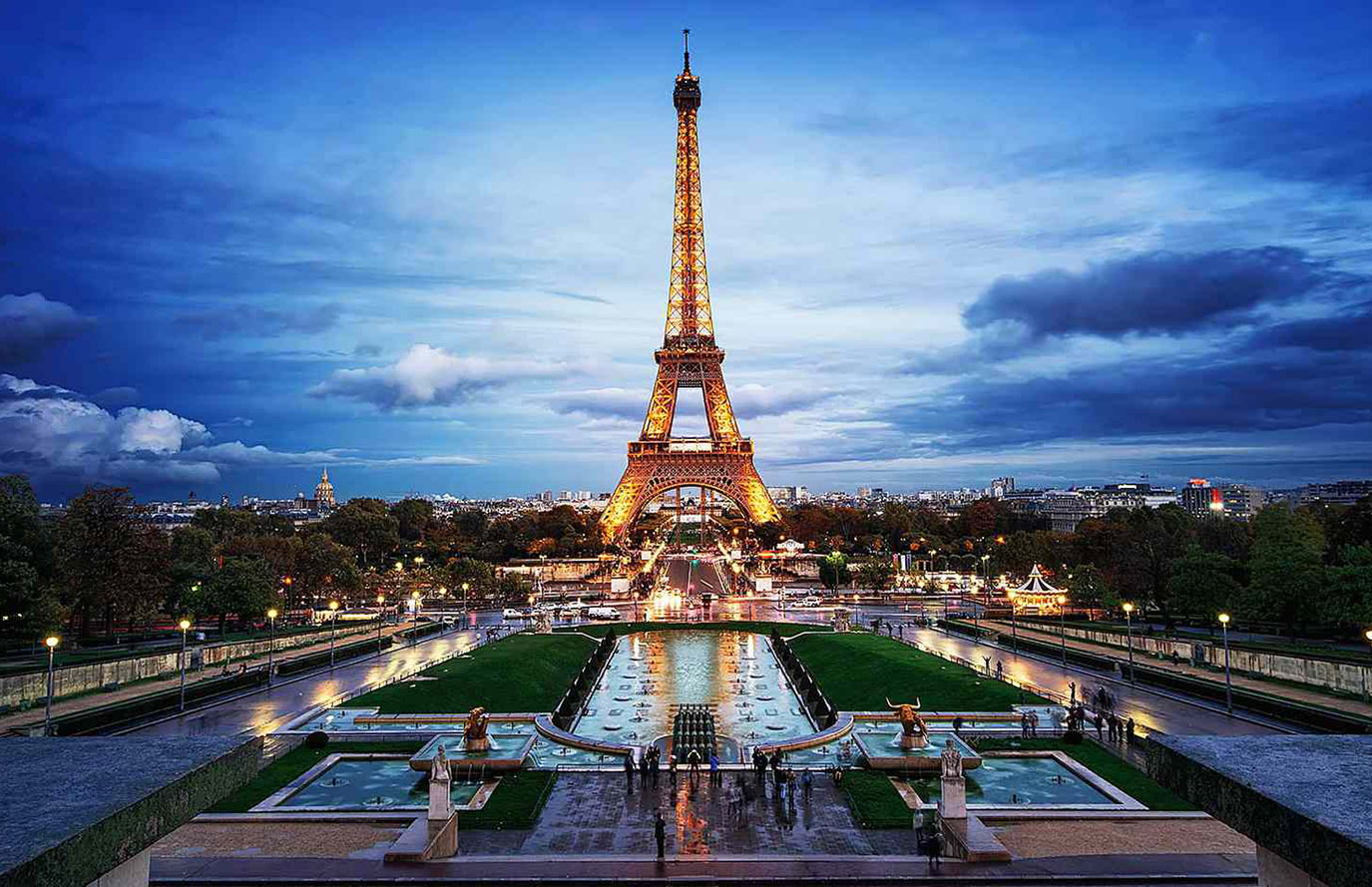Paris, often hailed as the “City of Light,” is not only celebrated for its romantic ambiance and architectural splendor but also renowned as a haven for art enthusiasts. With its rich cultural heritage and vibrant artistic scene, the French capital boasts an unparalleled array of world-class museums and galleries, each offering a captivating journey through the annals of art history. I embarked on a quest to explore Paris’s cultural gems, immersing myself in the masterpieces that grace its hallowed halls. Join me on this exhilarating adventure as we discover the treasures hidden within Paris’s most prestigious institutions.
Chapter 1: Musée du Louvre
Location: Musée du Louvre, Rue de Rivoli, 75001 Paris
Arrival: To reach the Louvre, I took the metro to the Palais Royal – Musée du Louvre station and followed the signs to the museum entrance.
Exploration: The Louvre, a former royal palace turned museum, is home to an unparalleled collection of art spanning thousands of years and encompassing diverse cultures and civilizations. As I wandered through its labyrinthine halls, I marveled at the sheer magnitude of its holdings, from ancient Egyptian artifacts to Renaissance masterpieces and iconic works of French painting. Among my favorite pieces were Leonardo da Vinci’s enigmatic masterpiece, the Mona Lisa, with its enigmatic smile captivating viewers for centuries; the majestic Winged Victory of Samothrace, a stunning marble sculpture that exudes grace and dynamism; and Eugène Delacroix’s Liberty Leading the People, a stirring portrayal of revolution and liberty that continues to inspire.
Recommendations:
Venus de Milo: This ancient Greek statue, depicting the goddess of love and beauty, is a testament to the enduring allure of classical sculpture.
The Raft of the Medusa by Théodore Géricault: Géricault’s monumental painting depicting the tragic tale of a shipwrecked crew is a tour de force of Romanticism, evoking raw emotion and human drama.
The Wedding at Cana by Paolo Veronese: This grandiose masterpiece, depicting the biblical miracle of turning water into wine, showcases Veronese’s mastery of composition, color, and narrative storytelling.
Service: While the Louvre’s vast size can be overwhelming, the museum offers excellent amenities, including audio guides and guided tours, to help visitors navigate its collections. However, crowds can be dense, especially around iconic works like the Mona Lisa, making it challenging to fully appreciate the art.
Pros: Unrivaled collection spanning various epochs and civilizations; iconic masterpieces such as the Mona Lisa and Venus de Milo; excellent amenities and guided tours available.
Cons: Crowded conditions, especially in high season; extensive collection may require multiple visits to fully explore.
Discounts and Booking: I booked my ticket online in advance to skip the line and secure a time slot for entry. The museum offers discounted admission for students, seniors, and EU residents under 26 years old.
Chapter 2: Musée d’Orsay
Location: Musée d’Orsay, 1 Rue de la Légion d’Honneur, 75007 Paris
Arrival: To reach the Musée d’Orsay, I took the RER train to the Musée d’Orsay station, located just steps away from the museum entrance.
Exploration: Housed in a stunning Beaux-Arts railway station, the Musée d’Orsay is renowned for its unparalleled collection of Impressionist, Post-Impressionist, and Art Nouveau masterpieces. As I wandered through its sunlit galleries, I was captivated by the luminous works of Claude Monet, Edgar Degas, and Vincent van Gogh, whose vibrant colors and innovative techniques revolutionized the art world. Among my favorite pieces were Monet’s Water Lilies series, which transported me to the tranquil gardens of Giverny; Degas’s exquisite ballet dancers, frozen in graceful motion; and Van Gogh’s iconic Starry Night, with its swirling skies and luminous stars igniting the canvas with emotion.
Recommendations:
Bal du Moulin de la Galette by Pierre-Auguste Renoir: Renoir’s lively portrayal of a Parisian dancehall captures the joie de vivre of Belle Époque society with its vibrant colors and convivial atmosphere.
The Thinker by Auguste Rodin: Rodin’s iconic sculpture, depicting a contemplative figure lost in thought, is a timeless symbol of human introspection and existential angst.
Olympia by Édouard Manet: Manet’s provocative masterpiece, depicting a reclining nude woman with confrontational gaze, scandalized audiences when it was first exhibited, challenging conventions of female beauty and sexuality.
Service: The Musée d’Orsay offers comprehensive visitor services, including guided tours, audio guides, and temporary exhibitions. The museum’s spacious layout and natural light create an inviting atmosphere for leisurely exploration. However, popular works may attract long queues, so I recommend arriving early or booking tickets in advance.
Pros: Superb collection of Impressionist and Post-Impressionist art; stunning Beaux-Arts architecture; excellent visitor amenities and temporary exhibitions.
Cons: Crowded conditions, especially around popular works; limited dining options within the museum.
Discounts and Booking: I purchased my ticket online in advance to skip the line and secure a time slot for entry. Discounts are available for students, seniors, and EU residents under 26 years old.

Chapter 3: Centre Pompidou
Location: Centre Pompidou, Place Georges-Pompidou, 75004 Paris
Arrival: To reach the Centre Pompidou, I took the metro to the Rambuteau station and followed the signs to the museum entrance.
Exploration: The Centre Pompidou, with its distinctive “inside-out” architecture, is a mecca for contemporary art lovers. As I ascended its iconic escalators, I was transported into a realm of avant-garde creativity and boundary-pushing innovation. The museum’s vast collection spans modern and contemporary art, including works by iconic artists such as Pablo Picasso, Salvador Dalí, and Andy Warhol. Among my favorite pieces were Picasso’s monumental Guernica, a searing indictment of war and violence; Dalí’s surreal masterpiece The Persistence of Memory, with its melting clocks and dreamlike imagery; and Warhol’s iconic Marilyn Monroe portraits, which epitomize the intersection of art and celebrity culture.
Recommendations:
Fountain by Marcel Duchamp: Duchamp’s groundbreaking readymade, consisting of a urinal turned on its side, challenged conventional notions of art and aesthetics, ushering in a new era of conceptual art.
The Great Masturbator by Salvador Dalí: This surreal self-portrait embodies Dalí’s fascination with dreams, sexuality, and the subconscious mind, inviting viewers into a world of bizarre and fantastical imagery.
Blue Nude II by Henri Matisse: Matisse’s minimalist yet expressive depiction of a female nude radiates with vibrant color and sensuous curves, showcasing the artist’s mastery of form and composition.
Service: The Centre Pompidou offers a range of visitor services, including guided tours, workshops, and temporary exhibitions. The museum’s innovative design and spacious galleries provide an immersive environment for contemporary art exploration. However, the museum can be crowded, especially on weekends and during peak tourist seasons, so I recommend planning your visit accordingly.
Pros: Cutting-edge collection of modern and contemporary art; iconic architecture and panoramic views from the rooftop terrace; diverse visitor amenities and educational programs.
Cons: Crowded conditions, especially around popular exhibits; limited dining options within the museum complex.
Discounts and Booking: I booked my ticket online in advance to skip the line and secure a time slot for entry. Reduced admission fees are available for students, seniors, and EU residents under 26 years old.
Chapter 4: Musée de l’Orangerie
Location: Musée de l’Orangerie, Jardin des Tuileries, 75001 Paris
Arrival: To reach the Musée de l’Orangerie, I took a leisurely stroll through the picturesque Jardin des Tuileries, located near the Place de la Concorde and the Louvre.
Exploration: Nestled within the tranquil confines of the Jardin des Tuileries, the Musée de l’Orangerie offers a serene oasis of Impressionist and Post-Impressionist art. As I entered its sunlit galleries, I was enveloped by the ethereal beauty of Claude Monet’s Water Lilies series, displayed in two oval-shaped rooms specially designed to evoke a sense of harmony and tranquility. The museum’s collection also includes works by other luminaries of the period, including Pierre-Auguste Renoir, Paul Cézanne, and Henri Rousseau. Among my favorite pieces were Renoir’s luminous portraits of Parisian society, capturing the joie de vivre of Belle Époque France; Cézanne’s iconic landscapes, with their geometric forms and vibrant colors; and Rousseau’s dreamlike jungle scenes, teeming with exotic flora and fauna.
Recommendations:
The Water Lilies by Claude Monet: Monet’s immersive series of water lily paintings, spanning the walls of two oval rooms, invites viewers into a realm of tranquil beauty and contemplation, where light and color dance upon the surface of the pond.
Dance at Le Moulin de la Galette by Pierre-Auguste Renoir: Renoir’s vibrant depiction of a festive gathering at a Parisian dancehall captures the vivacity and spirit of Belle Époque society, with its swirling skirts and joyful revelry.
Mont Sainte-Victoire by Paul Cézanne: Cézanne’s monumental landscape painting, depicting the iconic mountain near his home in Provence, exemplifies his revolutionary approach to composition and form, laying the groundwork for the emergence of modern art.
Service: The Musée de l’Orangerie offers a tranquil and contemplative environment for art appreciation, with spacious galleries and natural light enhancing the viewing experience. Audio guides and guided tours are available for visitors seeking additional insight into the museum’s collection. However, due to its smaller size, the museum may become crowded during peak hours, so I recommend visiting earlier in the day or during weekdays for a more leisurely experience.
Pros: Intimate setting nestled within the Jardin des Tuileries; unparalleled collection of Impressionist and Post-Impressionist art, including Monet’s Water Lilies; peaceful ambiance conducive to reflection and contemplation.
Cons: Limited dining options within the museum complex; smaller size may result in crowded conditions during peak hours.
Discounts and Booking: I purchased my ticket online in advance to avoid long queues and secure a time slot for entry. Reduced admission fees are available for students, seniors, and EU residents under 26 years old.

Exploring Paris’s world-class museums and galleries has been an enriching and inspiring experience. From the timeless masterpieces of the Louvre to the vibrant canvases of the Musée d’Orsay and the avant-garde creations of the Centre Pompidou, each institution offers a unique window into the rich tapestry of artistic expression. While navigating the crowds and planning logistics can be challenging, the opportunity to witness firsthand the transformative power of art makes it all worthwhile. Whether you’re a seasoned aficionado or a curious novice, Paris’s artistic treasures are sure to leave an indelible impression, igniting your imagination and fueling your passion for creativity.



